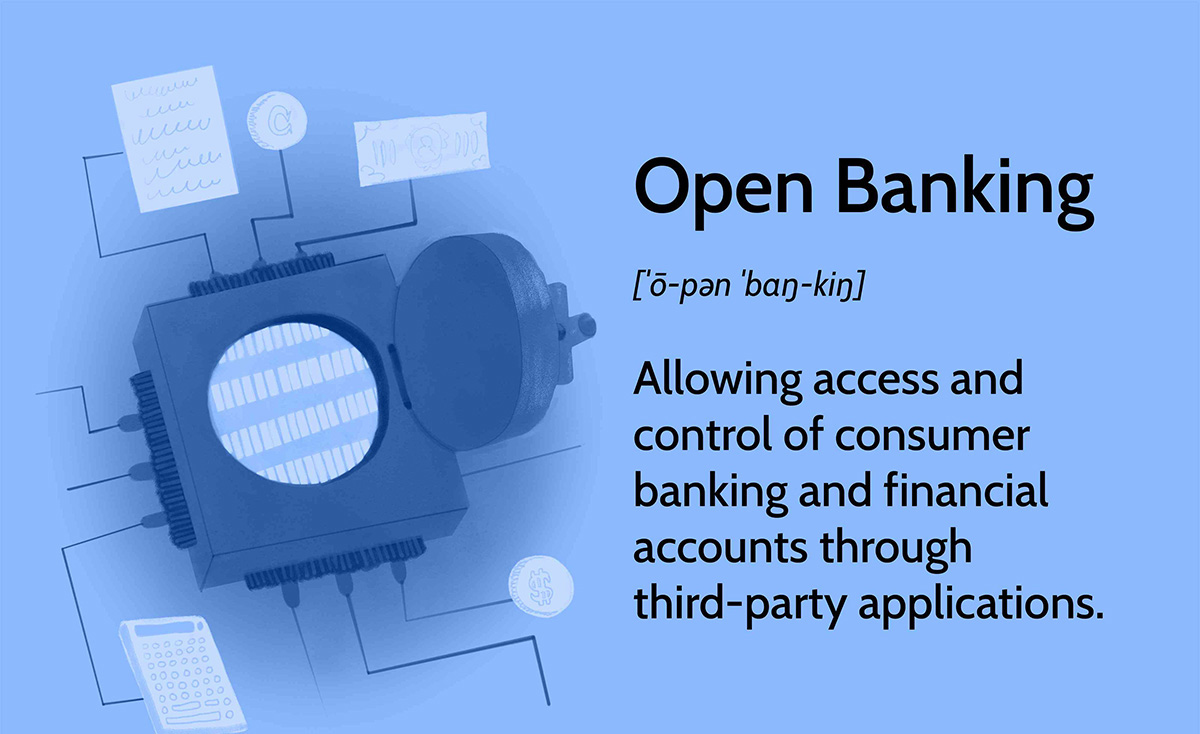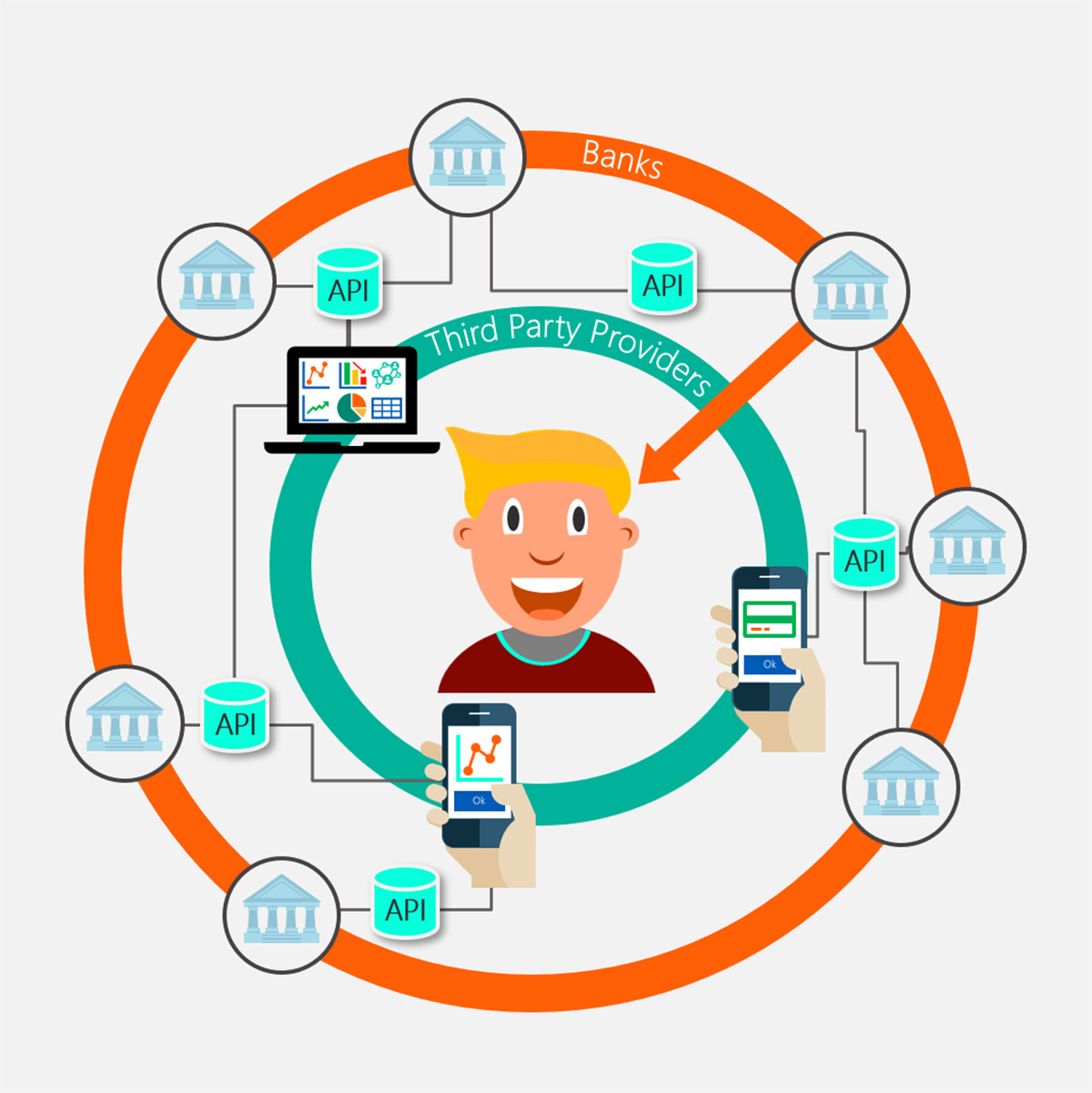

Finance
How To Open A Life Insurance Bank Account
Published: November 23, 2023
Learn how to open a life insurance bank account and manage your finances effectively. Secure your future with our expert financial advice.
(Many of the links in this article redirect to a specific reviewed product. Your purchase of these products through affiliate links helps to generate commission for LiveWell, at no extra cost. Learn more)
Table of Contents
- Introduction
- Step 1: Researching Life Insurance Banks
- Step 2: Choosing the Right Life Insurance Bank
- Step 3: Gathering Required Documents
- Step 4: Opening the Life Insurance Bank Account
- Step 5: Understanding the Terms and Conditions
- Step 6: Managing and Accessing Your Life Insurance Bank Account
- Step 7: Frequently Asked Questions (FAQs)
- Conclusion
Introduction
Welcome to the world of life insurance bank accounts! If you’re looking to secure your financial future and grow your savings, opening a life insurance bank account can be a smart move. Life insurance banks offer a unique combination of life insurance coverage and banking services, providing you with both protection and financial growth opportunities.
Unlike traditional bank accounts, life insurance bank accounts offer a range of benefits such as tax advantages, higher interest rates, and flexible withdrawal options. These specialized accounts are designed to meet the specific needs of individuals who understand the importance of long-term financial planning.
In this comprehensive guide, we will walk you through the process of opening a life insurance bank account. Whether you’re a beginner or someone with prior financial knowledge, this article will provide you with the necessary information to get started on your journey towards financial security.
So, if you’re ready to take control of your finances and unlock the advantages of a life insurance bank account, let’s dive in and explore the steps involved in opening and managing your account.
Step 1: Researching Life Insurance Banks
Before you open a life insurance bank account, it’s important to conduct thorough research to find the right institution that meets your financial needs. Here are a few key factors to consider during your research:
- Reputation and Financial Stability: Look for life insurance banks that have a solid reputation and a strong financial standing. You want to ensure that your money is safe and that the bank will be able to honor its commitments.
- Insurance Coverage: Evaluate the types and levels of life insurance coverage offered by different banks. Determine whether it aligns with your personal circumstances and objectives.
- Interest Rates and Fees: Compare the interest rates offered by various life insurance banks. Look for competitive rates that can help your savings grow. Additionally, consider any fees associated with the account, including maintenance fees or penalties for early withdrawals.
- Customer Service: Investigate the quality of customer service provided by different banks. You want to choose an institution that is responsive, helpful, and supportive throughout your banking journey.
- Online and Mobile Banking: Check if the life insurance bank offers convenient online and mobile banking services. This will allow you to easily manage your account, make transactions, and monitor your funds from the comfort of your home or on-the-go.
Take your time to analyze and compare the offerings of multiple life insurance banks. Consider reading reviews, seeking recommendations from trusted sources, and utilizing online comparison tools to make an informed decision.
By conducting thorough research, you will be able to narrow down your choices and select a life insurance bank that best fits your financial goals and preferences. Once you have chosen the right institution, you can proceed to the next step: opening your life insurance bank account.
Step 2: Choosing the Right Life Insurance Bank
Now that you’ve completed your research and have a list of potential life insurance banks, it’s time to choose the one that suits your needs best. Here are some factors to consider when making your selection:
- Financial Stability: It’s crucial to choose a life insurance bank that is financially stable and has a strong track record. Look for indicators such as high ratings from reputable credit rating agencies and a long history of serving customers.
- Range of Products and Services: Consider the range of products and services offered by the bank. Are they able to meet your specific needs? Look for options such as various types of life insurance coverage, investment opportunities, and additional banking services like online banking and mobile apps.
- Interest Rates and Fees: Compare the interest rates offered by different life insurance banks. Look for competitive rates that will help your savings grow over time. Additionally, review any fees associated with the account, such as annual fees or charges for transactions or withdrawals.
- Customer Service: Evaluate the quality of customer service provided by the bank. Are they responsive and knowledgeable? Read reviews and consider reaching out to their customer service team with any questions or concerns to get a sense of their level of support.
- Flexibility and Accessibility: Determine how easily you can access and manage your account. Look for features like online banking, mobile apps, and ATMs to ensure convenience and flexibility in handling your finances.
- Trust and Reputation: Consider the bank’s reputation and trustworthiness. Look for testimonials, reviews, and feedback from existing customers to gain insights into their experiences and satisfaction levels.
Remember, the right life insurance bank for you will depend on your unique financial goals and requirements. Take the time to carefully compare your options and consider seeking advice from a financial advisor if needed.
Once you have chosen the right life insurance bank, you’re ready to move on to the next step: gathering the required documents to open your account.
Step 3: Gathering Required Documents
Now that you’ve chosen the right life insurance bank, it’s time to gather the necessary documents to open your account. While the specific requirements may vary slightly from bank to bank, here are some common documents that you will likely need:
- Identification Documents: You will typically need to provide proof of identification, such as a valid passport, driver’s license, or national ID card. Make sure these documents are current and valid.
- Proof of Address: Banks usually require proof of your residential address. This can be in the form of a recent utility bill, bank statement, or any official document that clearly shows your name and current address.
- Income Verification: Some banks may require proof of your income, such as pay stubs, tax returns, or employment contracts. This helps the bank assess your financial stability and determine your eligibility for certain account features.
- Insurance Related Documents: As you are opening a life insurance bank account, you may be required to provide documents related to your life insurance coverage. This could include policy documents or correspondence from your insurance provider.
- Additional Documentation: Depending on the bank and the type of account you are opening, there may be other specific documents required. This could include bank references, investment statements, or any relevant legal documents.
It’s important to gather all the necessary documents before heading to the bank to open your account. Double-check the requirements listed on the bank’s website or contact their customer service for any clarifications.
Once you have all the required documents in order, you’re ready to move on to the next step: opening your life insurance bank account.
Step 4: Opening the Life Insurance Bank Account
With all the necessary documents in hand, it’s time to take the final step and open your life insurance bank account. Follow these steps to successfully open your account:
- Visit the Bank: Visit the nearest branch of the life insurance bank you have chosen. Bring along all the required documents and any additional information the bank may require.
- Meet with a Bank Representative: Upon arrival at the bank, request to meet with a bank representative who can guide you through the account opening process. This representative will assist you in filling out the necessary forms and provide any additional information you may need.
- Provide Personal Information: Fill out the required forms with accurate personal information, such as your full name, date of birth, contact details, and any other information requested by the bank. It is important to provide accurate information to ensure a smooth account opening process.
- Submit Identification Documents: Present your identification documents to the bank representative. They will verify your identity and make copies of the documents for their records.
- Review and Sign Documents: Carefully review all the terms and conditions, as well as any other legal documents related to your life insurance bank account. If you have any questions or concerns, don’t hesitate to ask the bank representative for clarification. Once you are satisfied, sign the necessary documents.
- Make an Initial Deposit: Some life insurance banks may require an initial deposit to activate your account. Provide the required funds according to the bank’s guidelines. This initial deposit can vary depending on the type of account you are opening.
- Receive Account Information: After completing the account opening process, the bank representative will provide you with your account details such as your account number, online banking login credentials, and any further instructions for accessing and managing your account.
Once you have successfully opened your life insurance bank account, take some time to familiarize yourself with the account features, policies, and any additional services that may be available to you. This will help you make the most of your new account and maximize its benefits.
Congratulations! You have now completed the process of opening your life insurance bank account. You can now move on to the next step: understanding the terms and conditions of your account.
Step 5: Understanding the Terms and Conditions
Now that you have successfully opened your life insurance bank account, it’s crucial to thoroughly understand the terms and conditions associated with it. By familiarizing yourself with the account’s terms and conditions, you can make informed decisions and avoid any potential misunderstandings or penalties. Here’s what you should do:
- Read the Documentation: Carefully review all the documentation provided by the bank, including the account agreement, terms and conditions, and any other related materials. Pay close attention to important details such as account fees, withdrawal limits, interest rates, restrictions, and any additional benefits or features.
- Clarify Any Questions: If you have any questions or uncertainties regarding the terms and conditions, don’t hesitate to reach out to the bank’s customer service. They will be able to provide you with the necessary explanations and clarifications.
- Identify Account Maintenance Requirements: Take note of any requirements for maintaining your account, such as minimum balance requirements or regular contributions. Understanding these requirements will help you avoid any penalties or account closures.
- Learn about Account Access: Familiarize yourself with the different methods of accessing your account, such as online banking, mobile apps, or ATM services. Make sure you understand how to make deposits, withdrawals, transfers, and any other transactions you may need to perform.
- Understand Insurance Coverage: If your life insurance bank account includes insurance coverage, make sure you understand the terms of the policy. Be aware of the coverage amount, any exclusions or limitations, as well as the requirements for making claims in case of a covered event.
- Stay Up-to-Date: Keep yourself informed about any updates or changes to the terms and conditions of your account. Banks may periodically revise their policies, and it’s essential to stay informed to ensure compliance and make the most of your account benefits.
By taking the time to understand the terms and conditions of your life insurance bank account, you can make informed decisions and maximize the benefits of your account. If you have any doubts or concerns, don’t hesitate to seek advice from a financial advisor or contact the bank’s customer service for further clarification.
Now that you have a solid understanding of the terms and conditions, you can move on to the next step: managing and accessing your life insurance bank account.
Step 6: Managing and Accessing Your Life Insurance Bank Account
Now that you have successfully opened your life insurance bank account, it’s time to start managing and accessing it effectively. Here are some key steps to help you in this process:
- Set Up Online and Mobile Banking: Take advantage of the convenience of online and mobile banking services offered by the bank. Set up your online account by registering and creating a secure login. Download the mobile banking app to access your account anytime, anywhere.
- Monitor Your Account: Regularly check your account activity and transactions. This helps you stay on top of your finances and quickly identify any unauthorized or suspicious transactions. Monitor your account statements and online activity to ensure accuracy.
- Make Regular Contributions: If your life insurance bank account allows contributions, consider making regular contributions to help grow your savings and maximize the benefits of the account. Set up automated transfers to make it easier to stay consistent with your contributions.
- Review Insurance Coverage: Periodically review your life insurance coverage to ensure it aligns with your needs and financial situation. Consider any necessary adjustments to your coverage, such as updating beneficiaries or increasing coverage amounts, to ensure adequate protection.
- Stay Informed: Keep yourself updated on any changes or updates to the bank’s policies or services that may affect your account. Subscribe to notifications or newsletters provided by the bank to receive relevant information directly.
- Seek Professional Advice: If you have any questions or need guidance regarding managing your life insurance bank account, consider consulting a financial advisor. They can provide personalized advice based on your financial goals and help you make informed decisions.
Effective management of your life insurance bank account involves regularly monitoring your account, staying informed about the account’s features and benefits, and making appropriate adjustments as needed. By staying actively involved in managing your account, you can ensure that it continues to meet your financial goals and objectives.
Remember, your life insurance bank account is a valuable financial resource, and it’s important to make the most of it. By following these steps, you can effectively manage and access your account, allowing you to make wise financial decisions and secure your future.
Now that you have mastered the art of managing your account, let’s move forward to the final section: Frequently Asked Questions (FAQs).
Step 7: Frequently Asked Questions (FAQs)
Here are some commonly asked questions regarding life insurance bank accounts:
- Can I have more than one life insurance bank account?
- How does the life insurance component work in a life insurance bank account?
- What are the tax advantages of a life insurance bank account?
- Can I access my funds easily in a life insurance bank account?
- What happens to my life insurance coverage if I close the account?
- Can I make changes to my life insurance coverage?
Yes, you can open multiple life insurance bank accounts with different institutions. However, it’s essential to consider your financial goals and whether maintaining multiple accounts aligns with your overall financial strategy.
A life insurance bank account typically includes a life insurance component that provides coverage in case of the account holder’s death. The coverage amount is usually based on the account’s balance. Consult the bank’s policy documents to understand the specific terms and conditions of the life insurance coverage.
Life insurance bank accounts often come with tax advantages, such as tax-free growth of savings and tax-free withdrawals upon reaching a certain age. However, tax regulations may vary depending on your jurisdiction. It’s recommended to consult a tax professional to understand the specific tax benefits applicable to your situation.
Life insurance bank accounts typically offer various methods of accessing your funds, such as online banking, ATM withdrawals, and check-writing privileges. However, some accounts may have certain restrictions or withdrawal limits. It’s essential to review the terms and conditions of your account to understand the accessibility of your funds.
If you decide to close your life insurance bank account, the life insurance coverage associated with it will typically cease. It’s important to review the terms and conditions of your account to understand the impact of closing the account on the life insurance component.
Depending on the policy, you may have options to make changes to your life insurance coverage. This could include adjusting coverage amounts, adding or removing beneficiaries, or modifying other policy features. Refer to the policy documents or contact the bank’s customer service for information on making changes to your life insurance coverage.
These are just a few common questions regarding life insurance bank accounts. If you have any specific questions or concerns, it’s recommended to reach out to the bank’s customer service team for personalized assistance and guidance.
With these FAQs answered, you now have a comprehensive understanding of life insurance bank accounts. Armed with this knowledge, you can confidently manage and make the most of your account to secure your financial future.
Congratulations on completing all the steps! You are now well-equipped to navigate the realm of life insurance bank accounts.
Conclusion
Opening a life insurance bank account can be a wise decision for those who are committed to securing their financial future. By combining the benefits of life insurance coverage with traditional banking services, these accounts offer a unique opportunity for individuals to protect their loved ones and grow their savings simultaneously.
In this comprehensive guide, we have explored the step-by-step process of opening and managing a life insurance bank account. We emphasized the importance of thorough research when choosing the right institution and highlighted the significance of understanding the terms and conditions associated with the account.
By following the steps outlined in this guide, you can confidently navigate the process of opening a life insurance bank account. From researching and choosing the right bank to gathering the required documents and understanding the terms, you are now equipped with the knowledge and insights needed to make informed decisions.
Remember to actively manage and access your account to make the most of its features and benefits. Regularly monitor your account activity and stay informed about any updates or changes to ensure that your account continues to align with your financial goals.
Lastly, if you have any additional questions or concerns, reach out to the bank’s customer service or consider consulting a financial advisor for personalized guidance.
Congratulations on taking the first step towards securing your financial future by opening a life insurance bank account!














